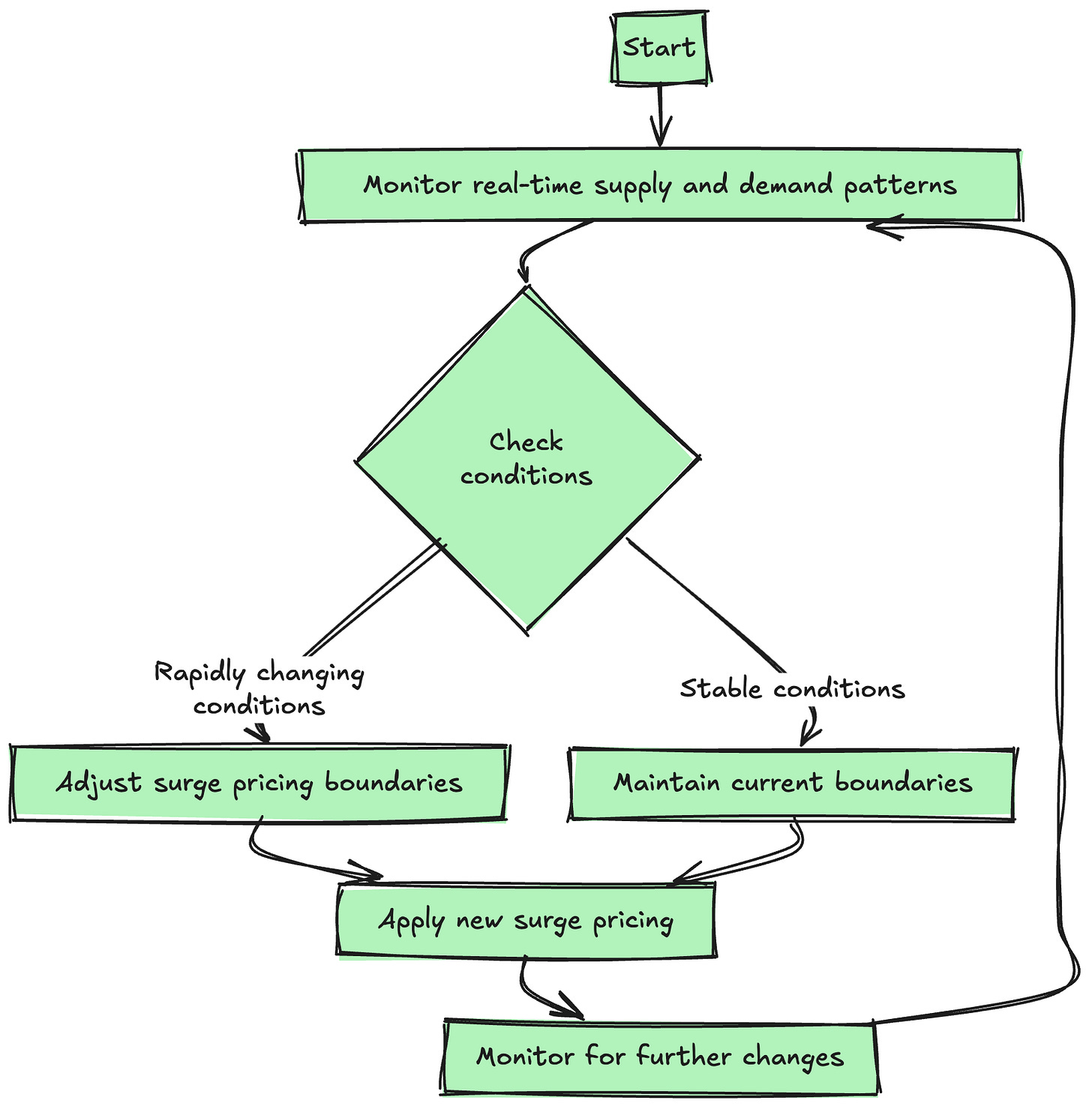[System Design Tech Case Study Pulse #81] 100K Events per Second : How Uber Real-Time Surge Pricing Actually Works
Behind the tech with detailed explanation and flow chart....
Hi All,
Uber's ability to process 100,000 events per second for real-time surge pricing using Apache Storm is a testament to its highly sophisticated and scalable data processing architecture. This incredible feat enables Uber to dynamically adjust prices based on real-time supply and demand, ensuring efficient market balance across its vast network of drivers and riders.
Let's dive deep into how Uber engineered this complex system, exploring the key architectural decisions, scaling strategies, and optimizations that enabled their Storm-based infrastructure to achieve such impressive scale and speed in the context of surge pricing.
Learn how to Design Facebook Newsfeed
System Overview
Before we delve into Uber's Storm architecture for surge pricing, let's look at some key metrics that highlight the scale of their operations:
- Events processed per second: 100,000+
- Active drivers: Millions globally
- Active riders: Tens of millions globally
- Cities served: 10,000+
- Countries: 70+
- Latency for price updates: < 100ms
- Data centers: Multiple, globally distributed
- Availability: 99.99%+
How Real World Scalable Systems are Build — 200+ System Design Case Studies:
System Design Den : Must Know System Design Case Studies
[System Design Case Study #27] 3 Billion Daily Users : How Youtube Actually Scales
[System Design Tech Case Study Pulse #17] How Discord's Real-Time Chat Scales to 200+ Million Users





